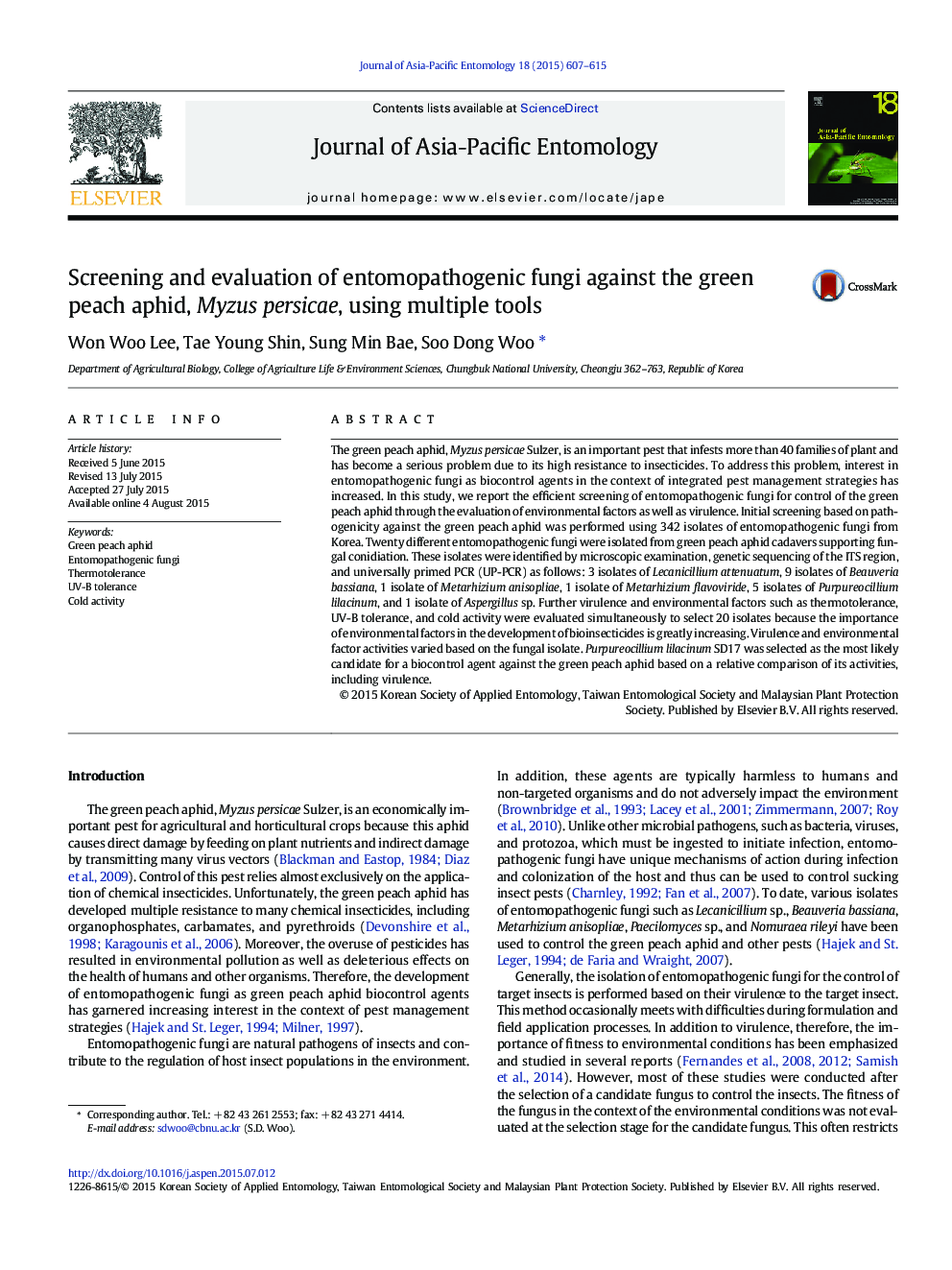| Article ID | Journal | Published Year | Pages | File Type |
|---|---|---|---|---|
| 4524673 | Journal of Asia-Pacific Entomology | 2015 | 9 Pages |
•Multiple screening and evaluation of entomopathogenic fungi for biocontrol agents.•Evaluation of theromotolerance, UV-B tolerance and cold activity of fungi.•Selection of most useful fungi to green peach aphid.
The green peach aphid, Myzus persicae Sulzer, is an important pest that infests more than 40 families of plant and has become a serious problem due to its high resistance to insecticides. To address this problem, interest in entomopathogenic fungi as biocontrol agents in the context of integrated pest management strategies has increased. In this study, we report the efficient screening of entomopathogenic fungi for control of the green peach aphid through the evaluation of environmental factors as well as virulence. Initial screening based on pathogenicity against the green peach aphid was performed using 342 isolates of entomopathogenic fungi from Korea. Twenty different entomopathogenic fungi were isolated from green peach aphid cadavers supporting fungal conidiation. These isolates were identified by microscopic examination, genetic sequencing of the ITS region, and universally primed PCR (UP-PCR) as follows: 3 isolates of Lecanicillium attenuatum, 9 isolates of Beauveria bassiana, 1 isolate of Metarhizium anisopliae, 1 isolate of Metarhizium flavoviride, 5 isolates of Purpureocillium lilacinum, and 1 isolate of Aspergillus sp. Further virulence and environmental factors such as thermotolerance, UV-B tolerance, and cold activity were evaluated simultaneously to select 20 isolates because the importance of environmental factors in the development of bioinsecticides is greatly increasing. Virulence and environmental factor activities varied based on the fungal isolate. Purpureocillium lilacinum SD17 was selected as the most likely candidate for a biocontrol agent against the green peach aphid based on a relative comparison of its activities, including virulence.
Graphical abstractFigure optionsDownload full-size imageDownload as PowerPoint slide
